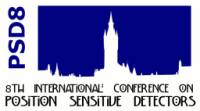Alan Litke
(Santa Cruz Institute for Particle Physics (SCIPP))
02/09/2008, 16:10
Position Sensitive Detectors for Biology
Keynote talk
The back of the eye is lined by an extraordinary biological position
sensitive detector, the retina. This living neural network is able to
extract vital information about the external visual world, and transmit this
information in a timely manner to the brain. In this talk, after a brief
introduction to retinal architecture, I will describe how we measure the
functional properties of the...
Jerome Baudot
(Institut de Recherches Subatomiques (IReS))
02/09/2008, 16:50
Position Sensitive Detectors for Biology
Oral Contribution
CMOS sensors are developed for high energy physics. They offer a unique optimization with respect to granularity, thickness, readout speed, radiation tolerance and power consumption. We focus here on photon imaging.
After a presentation of the general achievements of the MIMOSA sensors, we discuss the sensor ability to detect X rays of a few keV. We then turn to the back-thinned version of...
Dr
Grigore Moldovan
02/09/2008, 17:10
Position Sensitive Detectors for Biology
Oral Contribution
A number of electron detectors for transmission electron microscopes (TEM) are being developed to overcome limitations of existing imaging cameras, i.e. poor modulation transfer, low efficiency, slow frame rate and limited dynamic range. A variety of new detection modes is being considered with these new detectors, but which will provide optimum performance? This work presents beam tests...
Dr
Deborah Gunning
(The University of Glasgow)
02/09/2008, 17:30
Position Sensitive Detectors for Biology
Oral Contribution
Position-sensitive biological neural networks, such as the brain and retina, require position-sensitive detection methods to identify, map and study their behaviour. Traditionally, planar microelectrodes have been employed to record the cells electrical activity, with device limitations arising from the electrodes 2-D nature. Described here is the development and characterisation of an array...

